The most famous tapestry in the Western world is not, in fact a tapestry, but that does not diminish its incredible workmanship or its place in history. I’m referring to the Bayeux tapestry. A visit to Bayeux to see this work was high on my list of things must-dos while in France last month. (It was 2nd only to seeing the Lady and the Unicorn.) It remains in excellent condition after almost 1,000 years. I don’t think it’s ever been stored away in an old barn as many woven tapestries have been, so it is in remarkable condition. At the museum in Bayeux, where it is housed, you can walk along the length of this epic embroidered tale, and marvel. I marveled that the background was entirely handspun and handwoven. I marveled that all the embroidery threads were handspun and hand dyed. I thought about those nuns who sat together and wielded their needles one thousand years ago. In some fundamental ways we are so similar to those women. Nihil novi sub sol.
The museum in Bayeux has done such a clever job of displaying the tapestry that I never even missed the fact that I could not take photos. The “tapestry” is displayed in a dimly lit glass case that flows in a large circle in the center of a darkened gallery. Everyone is given headphones to listen to an audio description of the work and the story of the Norman Conquest of England in 1066. Like everyone else, I was compelled to keep up with the narrator so that I could see the bits of the story illustrated in the embroidered piece, as well as taking some time to enjoy the lovely colors of the dyed threads and examine the stitches.

The piece is 224 feet long. It tells the story of the Conquest, from King Edward’s death, through the envoy that went to France to alert William of Normandy that he was the chosen successor to Edward, to cousin (or some kind of relative) Harold usurping the English throne for himself, through William’s amassing troops and building ships to sail to England and claim his place. It’s intriguing to ‘read’ this story in the imagery of the embroidery. It’s hard to pick any part of the piece that stands out above the rest. The building of ships caught my eye, with all the details of cutting down trees and the depiction of the tools used for shaping the stem and the planks for the boats. I think this was part of the work that captured Bob’s attention.
The scenes of the ships sailing across the channel made me realize how much I’d enjoy weaving the various men onboard and the colorful sails. A few years ago, one of the Wednesday Groupers decided to weave a small section of the Bayeux tapestry as woven tapestry. I totally understand. I’m feeling pulled to weave those ships under sail. I hope the nuns enjoyed their creative interpretations as they stitched.
The battle scenes were equally well executed, and I found the depiction of horses in battle quite moving.

Standing in the presence of something so well preserved and so beautifully made is quite emotional. It’s impossible not to think of the women who made this piece, the men who commissioned it, the men who lived the story being told. It’s impossible to ignore the long projection of time that brought us to the 21st century, how our native tongue is now a mix of Norman French and Saxon and Old Norse, how our way governing spread through the world through England’s vast expansion of colonies. Here is one story, told at the beginning of this long history of evolution and progress of the English language and English justice, worked in embroidery by women.
A Short Tour of the Normandy Coast
Normandy is a beautiful area of France, known for cheese, for apples and pears and Calvados, for damp foggy days along the shore.
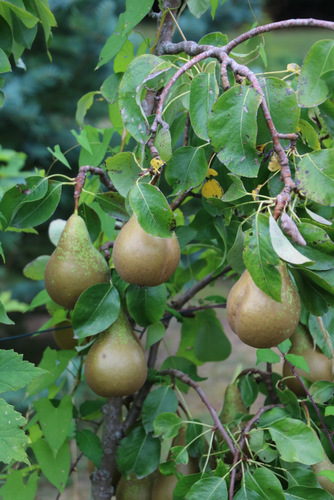
We were quite lucky to have clear, dry days while we were there. The beaches were stunning, but it was easy to imagine how difficult that D-day landing was over 75 years ago, on a far less beautiful day. That was another memorable part of our trip that lies outside the subject of my post. Still, after seeing the amount of work in the Bayeux tapestry, telling a 1,000 year old story, I couldn’t help but notice the similarities in the various battles fought along the same coastline, during the past 10 centuries.
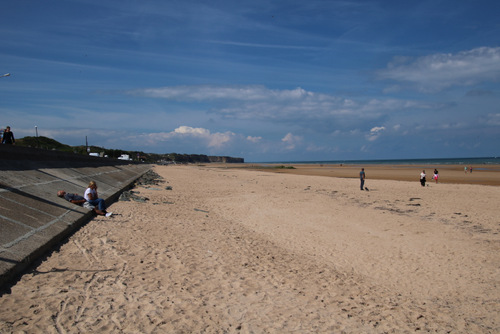
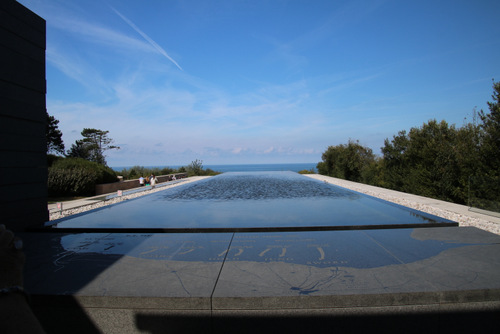
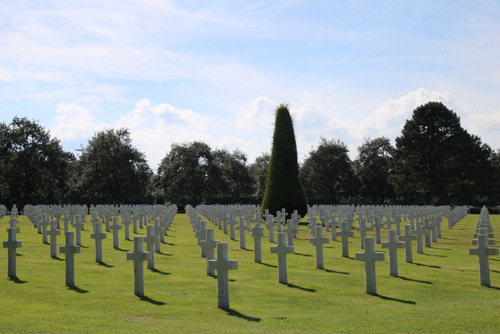
We ate cheese each day, and each day we sampled some apple cider and a few times some Calvados. My compulsion to make lists of must-sees/must-dos included having sole Normandie. I couldn’t wait to have the same meal that Julia Child had on her arrival in France so many years ago. I was shocked that I could not find it on any menu in Bayeux, Honfleur, or Etretat! That was another little disappointment, but the cheeses surely made up for not it…and the bread!
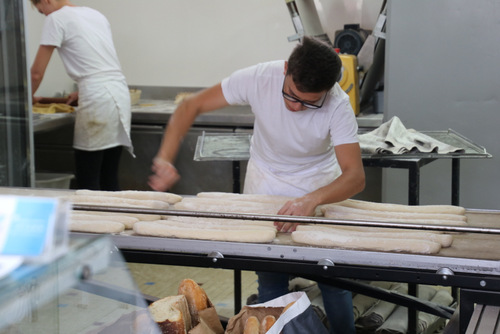
In spite of the fact that the coastal towns along the Normandy shore are famously scenic, I found Bayeux to be my favorite. It may have been the light. We were blessed with dry, clear days.
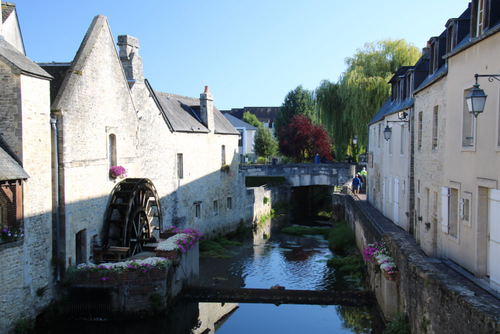
The streets of Bayeux are festooned with colorful balloon type decorations, and many shop windows have been painted with images and slogans of gratitude for saving French culture during WWII. There are French, British, Canadian and US flags everywhere, and even a few German flags.
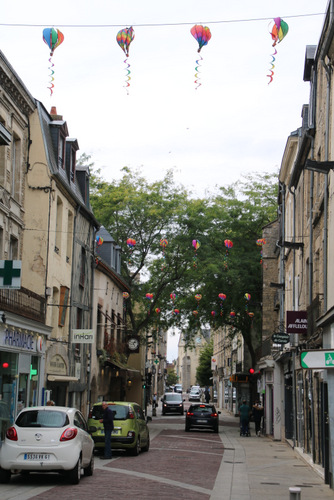
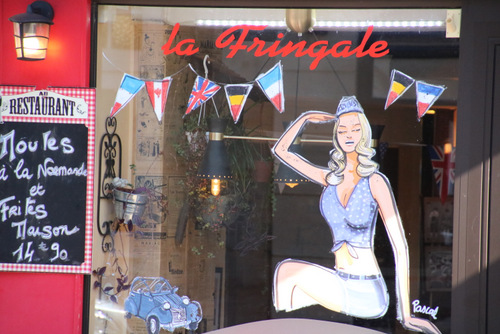
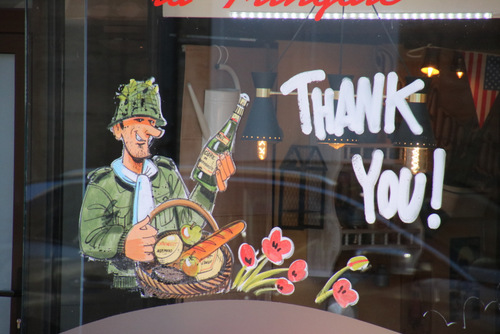
We stayed just outside Bayeux in a farmstay, and it was an excellent choice. This place is as charming as a fairy tale, and we walked along a country road at the edge of several farms and into a tiny nearby village.
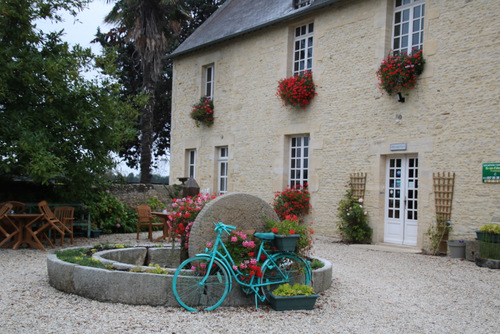
From Bayeux, we traveled north to Honfleur and Etretat. Honfleur is incredibly scenic as touristy, and Bob enjoyed a day of looking at boats. I think he took about 1,000 photos. For lunch we sat under one of those umbrellas to the left of this photo.

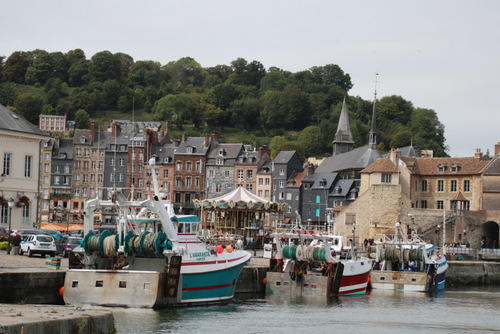
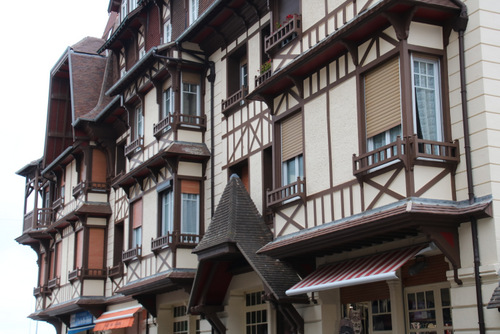
If I were to start writing about the gardens….well, it would be a deep rabbit hole. Gardens, window boxes, and florists were so lush everywhere we traveled. The roses I saw everywhere were as perfect as roses in June in New England. Can I limit myself to one photo? Maybe….just for this post.
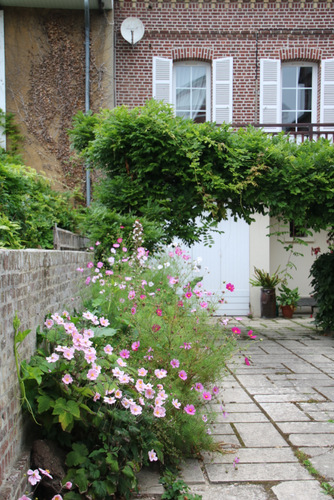
I hope I never forget the view of the shoreline in Etretat, seeing the very view that Monet painted on several occasions. It made me realize how fluid time is, that I could stand in the same spot that someone immortalized in art a century (or 10 centuries) before I stood in that very place.
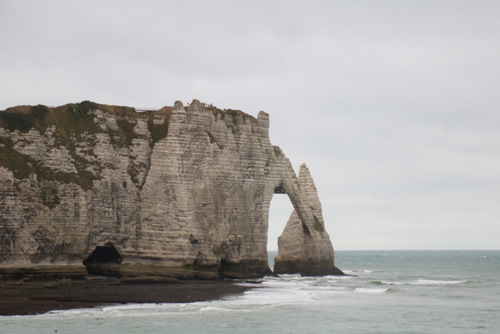
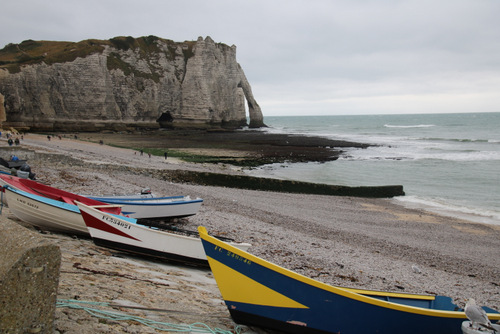
We could even see this memorable landmark from the tiny balcony of our room at one of the highest points in town.
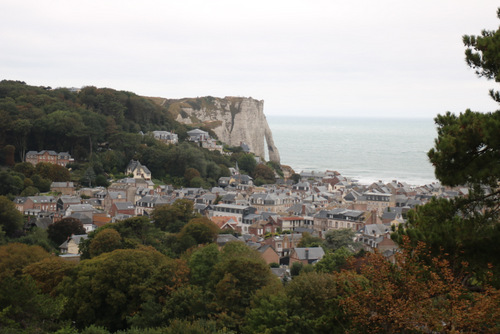
We celebrated Melody’s birthday in Etretat and then began our journey back to Paris, stopping in Rouen and Giverny.

I think I need a post about the bounty of French markets’ fresh vegetables and fruit, perhaps touching briefly on gardens which of course includes Giverny, and all the lace I saw throughout Normandy. Next time…

I really like what you said about the fluidity of time and how moved you were by the tapestry as well.
I found your journal describing your experience visiting and admiring the Bayeux tapestry most engaging. I have just acquired a small part (27 x 76) of a copy of the Bayeux tapestry for our new home in Michigan This was found while unsuccessfully searching for a tapestry capturing The Battle of Ashdown in 871–near to the origin of my ancestors in 1336. But his search was a result of a long held inspiration and fascination of a large tapestry in the stair corridor of the Detroit Athletic Club.
Further, as a French culture aficionado I am a member of a local chapter of Alliance de France–admirers of French Culture–and have an oil copy of the Monet painting of Etretat in my home–small world!